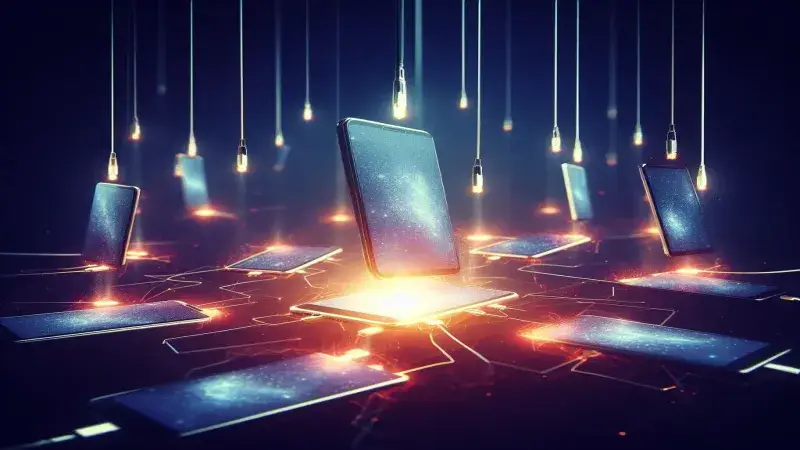Charging phones by air: dream or reality? Artificial intelligence vision for technological development

Smartphones are indispensable devices in our daily lives, as they help us communicate, work, learn, entertain and other different activities. But how will smartphones look like in the future? Will they have new and innovative features that make them more useful and enjoyable? In this article, we will try to explore some of the expectations and trends that may change the shape and function of smartphones by 2030.
Air Charging
One of the problems that smartphone users face is the fast battery drain, especially with the use of applications, games and the internet. Therefore, air charging may be an ideal solution for this problem, as the phone can charge itself through the air without the need for a cable or a charging base. This technology uses radio waves or magnetic or laser waves to transfer energy from a source to a receiving device. Some companies such as Huawei, Samsung and Apple are working on developing this technology, and it may become available in the near future.
Foldable Design
The design of smartphones may witness major changes in the future, as the screens may become foldable or flexible or transparent. These designs allow increasing the screen size without increasing the device size, as well as storing the phone easily in the pocket or bag. Some examples of these designs are Samsung Galaxy Fold, Motorola Razr and Apple iPhone Fold.
6G Networks
Internet connection is one of the most important uses of smartphones, and therefore the development of fifth generation networks 5G is an important step in improving the speed, quality and security of this connection. But what about sixth generation networks 6G? These networks may be 100 times faster than 5G, and may support new services such as connecting all devices to each other (Internet of Things) and cloud computing (Cloud Computing) and artificial intelligence (Artificial Intelligence) and augmented reality (Augmented Reality) and virtual reality (Virtual Reality) and others. Some companies such as Huawei, Samsung, Nokia and Apple are looking for developing these networks, and they may become available in 2030.
Eco-Friendly Smartphones
Smartphones have a negative impact on the environment, as they consume a lot of natural resources in their manufacture, contain toxic materials in their composition, and produce a lot of electronic waste when disposed of. Therefore, there may be a trend in the future towards making smartphones more eco-friendly, by using recycled or biodegradable or plant-based materials in manufacturing phones, using renewable energy sources such as sun or wind or water in charging phones, and using programs and applications that help reduce energy and resource consumption. Some examples of these phones are Fairphone Fairphone, Solarin Solarin and Zanzar Zanzar.